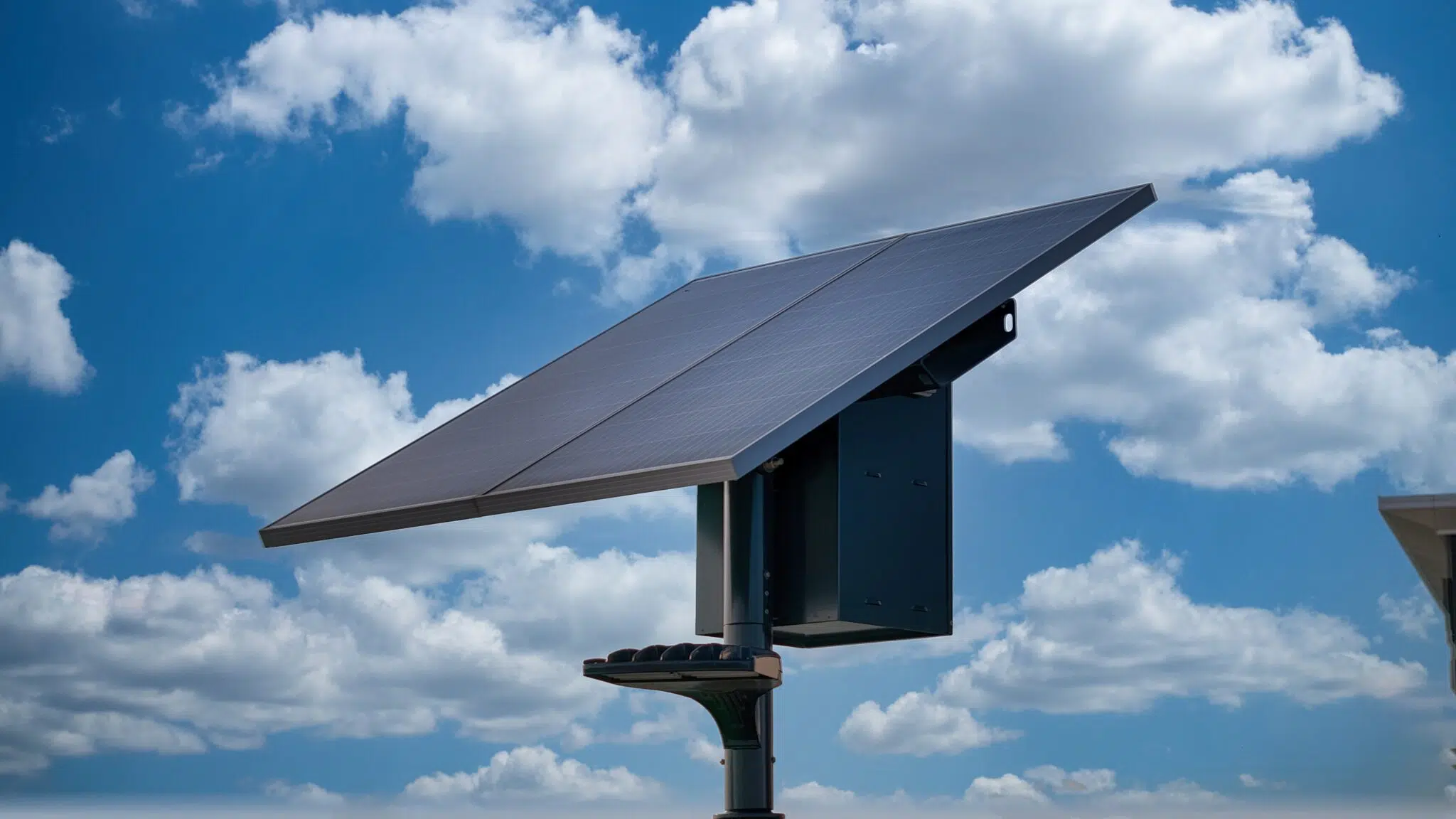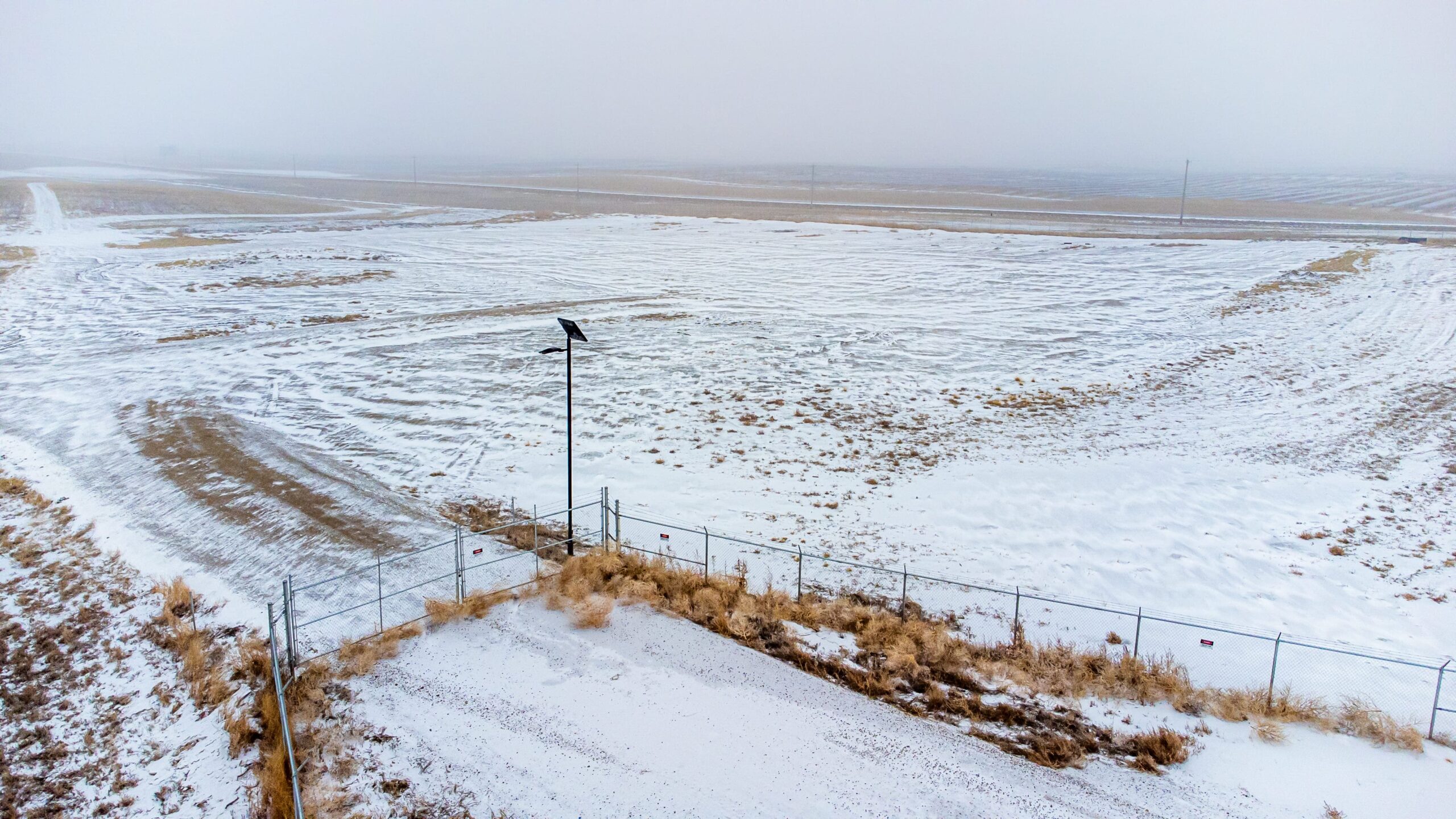
Solar lighting is unreliable. It only works in warm, sunny locations. It doesn’t provide enough light for certain applications, including roadways. Despite proven benefits and growing popularity, misinformation abounds about solar lighting.
Fortunately, you don’t have to believe everything you hear. Qualified solar lighting professionals—that’s us!—can help you separate fact from fiction and make informed decisions about your next lighting project. Read on as we address some of the most common solar lighting myths and correct the misinformation surrounding this sustainable lighting option.
This is probably the objection we hear the most, and it could not be farther from the truth—so long as your system is sized correctly. Solar lights fail not because of some fundamental flaw with solar technology but because the system’s batteries and panels are not sized to the location and load.
If the panels are too small, they won’t be able to collect enough energy during the day. If the batteries are too small—or the chemistry is a bad match for your needs—they won’t be able to hold enough charge to power the system at night.
At Sol, we custom size all our systems to the project location and load so we can be certain they will operate as expected year-round. We err on the side of caution, using an array-to-load ratio of 1.2 and building in at least two days of backup power to carry you through unexpected bouts of bad weather.

We dispelled this one in detail in a previous post, but to recap: Solar lighting can work as well in high-latitude locations where cooler temperatures and cloudy skies are the norm as it does in warm, sunny places like the Sun Belt. The key—again—is sizing.
A solar light in Seattle is likely going to need a larger solar array and bigger (or denser) batteries than a light in Phoenix. We say ‘likely,’ because there are other ways to make it work—like changing the operating profile. Rather than providing light dusk to dawn, you could dim the light, switch it off, or use a motion detector to conserve energy and minimize system size/cost.
This one might have been true a couple of decades ago, but with solar panel costs falling and new funding options becoming available, it’s not the case today. In 2024, material costs for solar lighting and conventional grid-tied lighting are closer than they’ve ever been, and when you factor in tax credits and rebates like the federal Investment Tax Credit (ITC), solar comes out ahead—way ahead.
Why? Because the ITC can offset the cost of new solar lighting installations by 30-60% (using stackable bonuses). Combine it with other government grants like the Community Development Block Grant (CDBG), and you could be looking at one very affordable solar lighting project.
Plus, solar power is free! Rather than purchasing electricity from a utility—a cost currently outstripping inflation—you can get it from the sun, for free! Add the fact that installation requires no trenching or wiring and you have one cost-effective light.
We’re not sure who started this rumor, but don’t be fooled: solar lights last just as long as grid-tied lights, if not longer. For starters, solar panels last a very long time: more than 25 years, according to the Solar Energy Industries Association (SEIA). Some panels installed in the early 1980s are still performing at effective levels.
Second, the fixtures used in solar lighting systems almost always outlast conventional streetlight bulbs like high-pressure sodium. Whereas HPS bulbs need to be replaced approximately every four years, high-quality LED fixtures (like the ones Sol uses from Acuity Brands) have an expected service life of over 100,000 hours, or almost 11.5 years!
The only part of a solar light you might need to replace within the first decade is the battery. Again, this depends on sizing and whether the right battery chemistry has been selected. A healthy lead-acid battery can function for around 4 years; an NiMH can last upwards of 10.
While some applications (e.g., stadiums, freeways, and high mast applications) aren’t suitable for solar lighting due to their high lumen requirements, solar lighting can—and has!—been used to enhance visibility and safety on streets.
Take Kansas, OK, which used Sol’s EverGen-M systems to light a new roundabout. Or Madera, CA, which used solar lights on streets without the necessary infrastructure to install conventional street lights. Or the hundreds of other cities that have opted to ‘pilot’ solar lighting and expanded their installation after experiencing the benefits.
One way to make solar street lighting viable is to use adaptive lighting, which matches light levels to activity levels. By reducing the intensity during off-peak times, significant energy can be banked for times when bright light is needed. The IES endorses adaptive lighting for major, collector, and local roads, but not intersections, midblock crosswalks, or freeways.
Ouch! There may have been a time when this was true (when solar lighting fixtures, poles, and mounts were more limited), but modern solar streetlights offer a sleek and unobtrusive design that is at home in virtually any environment.
Furthermore, the LEDs used in solar fixtures like Sol’s aren’t as blindingly bright as they once were. Thanks to advances in LED technology, you can now enjoy warmer-white color temperatures while still meeting required light levels, all without any of the adverse health and environmental impacts associated with early LEDs.
—
So there you have it. Now that you know the truth about solar lighting, it’s looking a whole lot brighter, isn’t it? If you’re ready to take the next step, drop us a line to see how we can help with your next solar lighting project.
